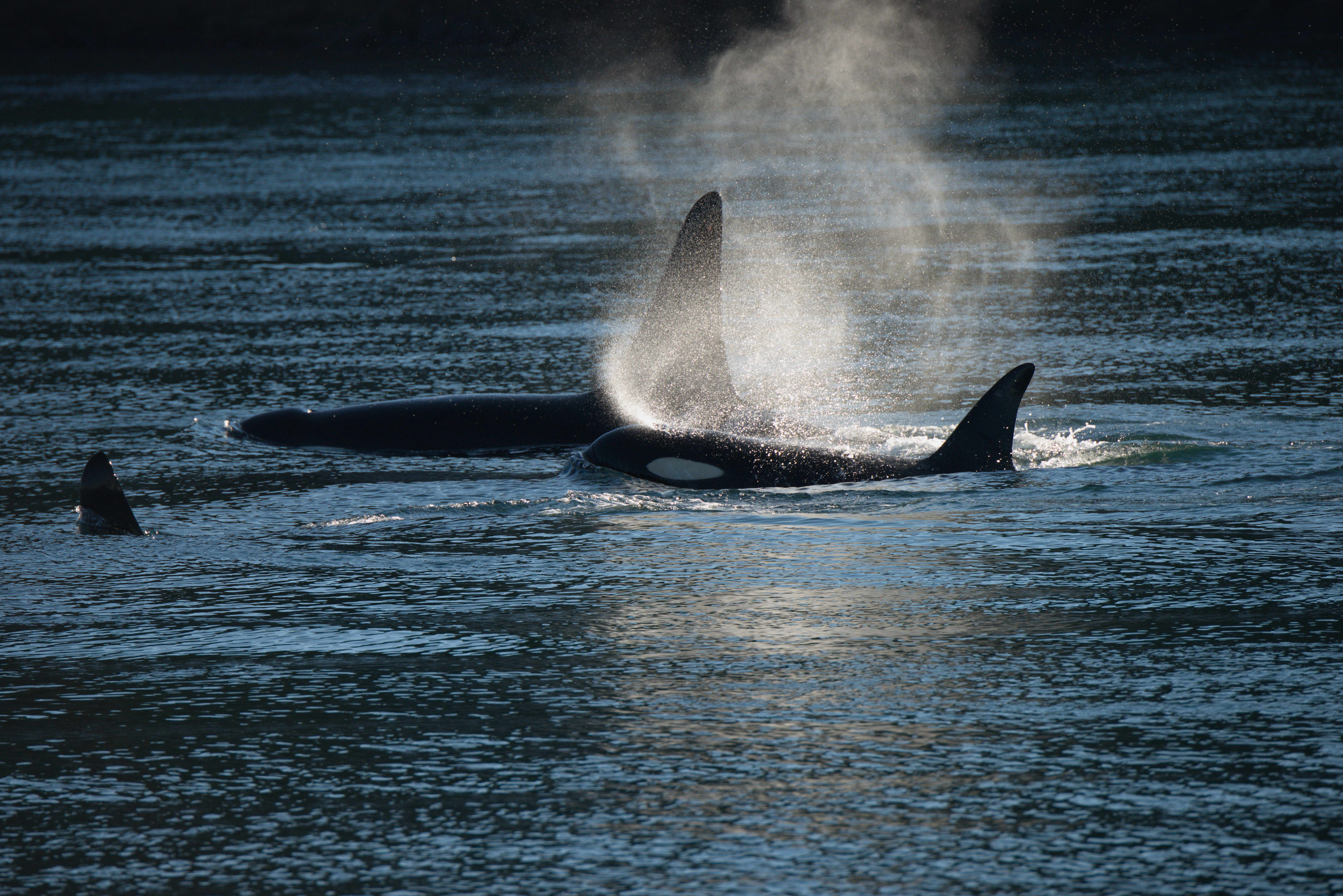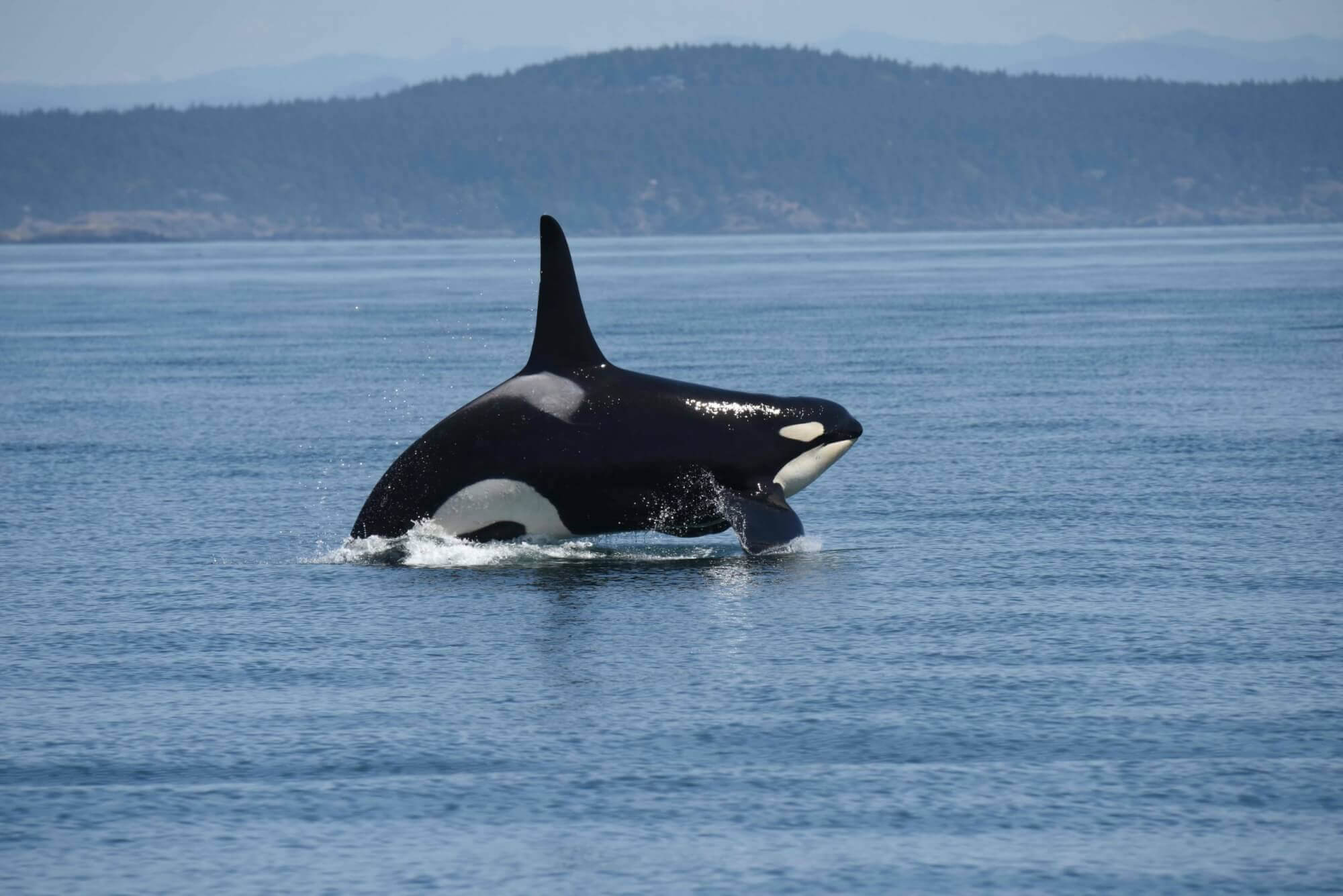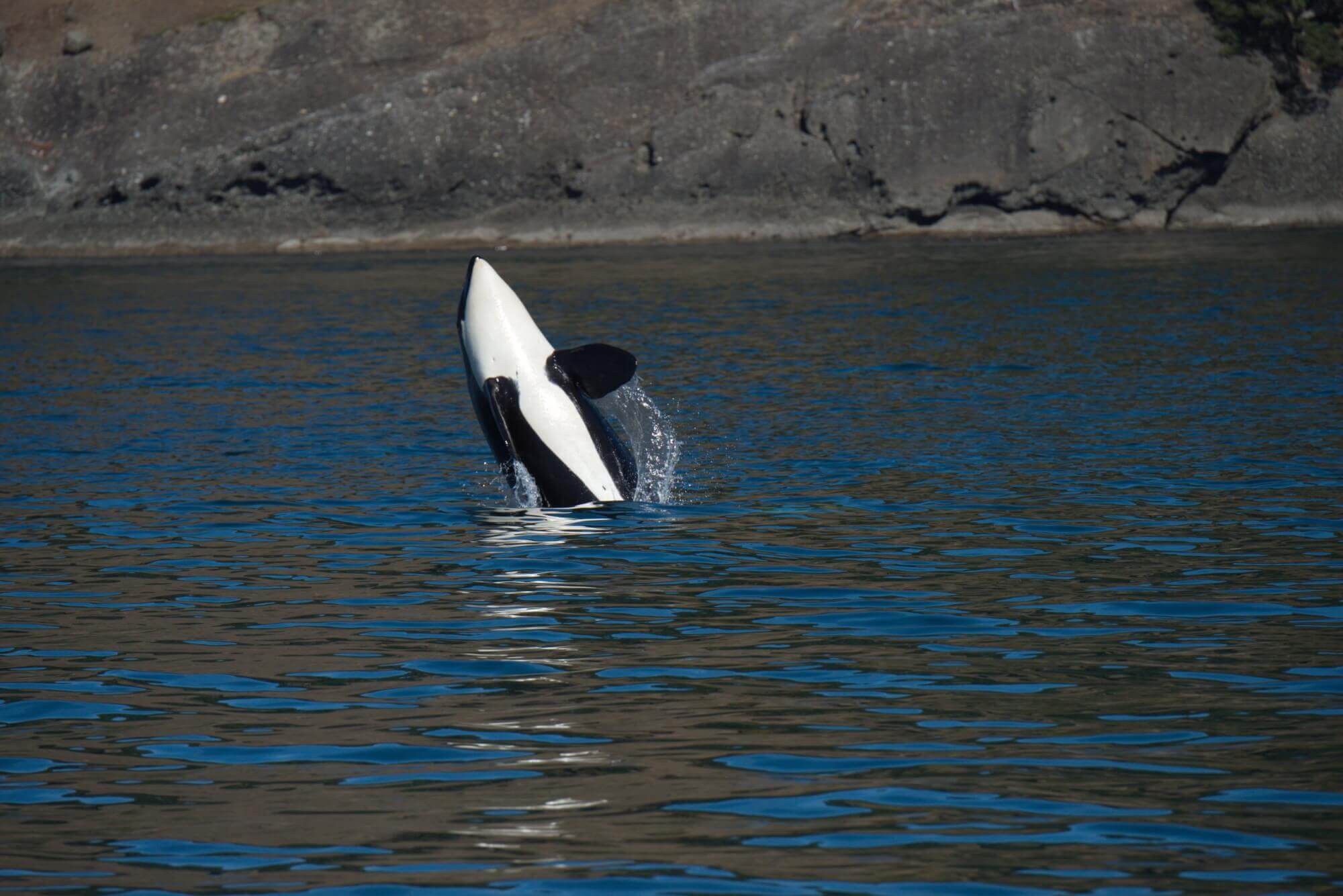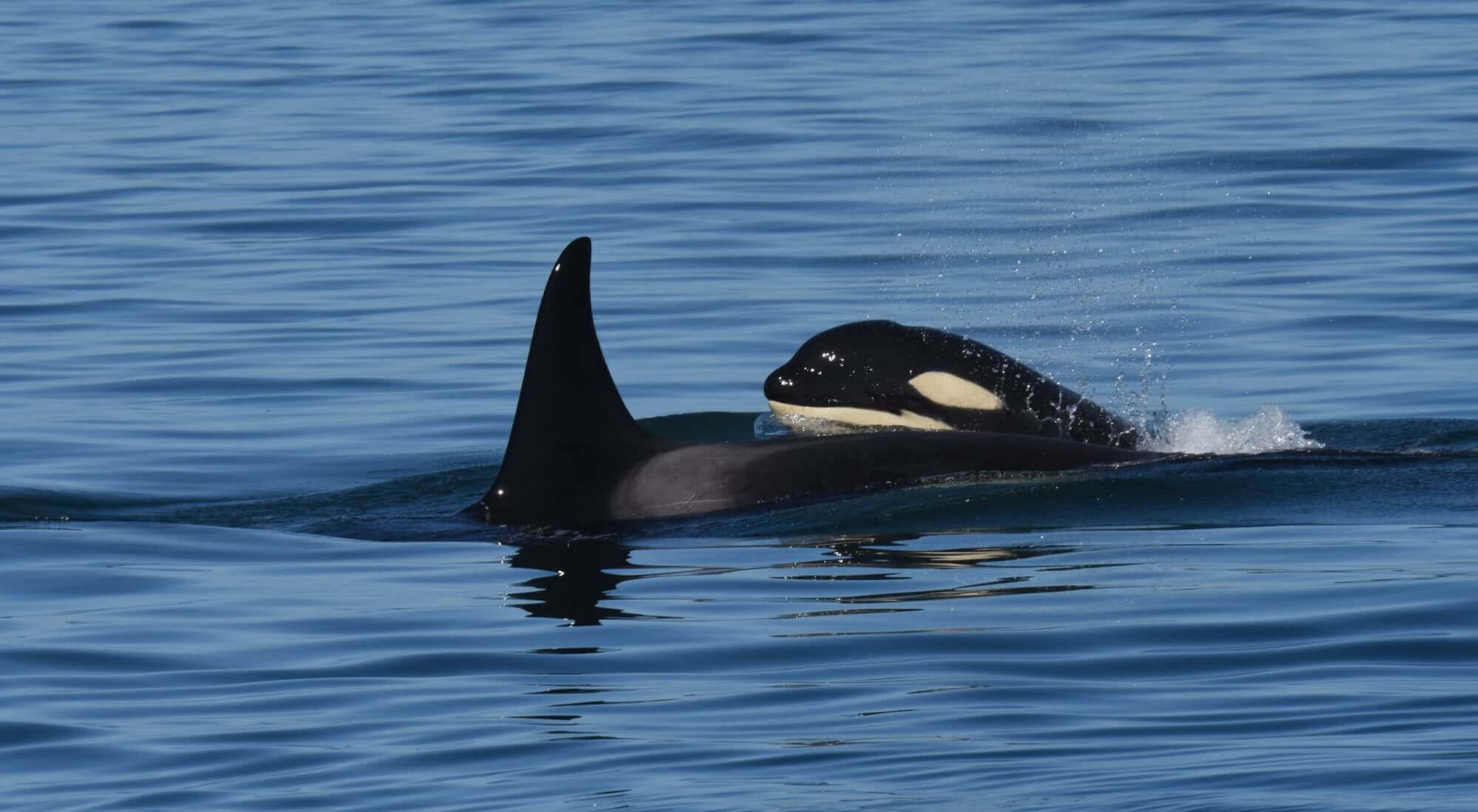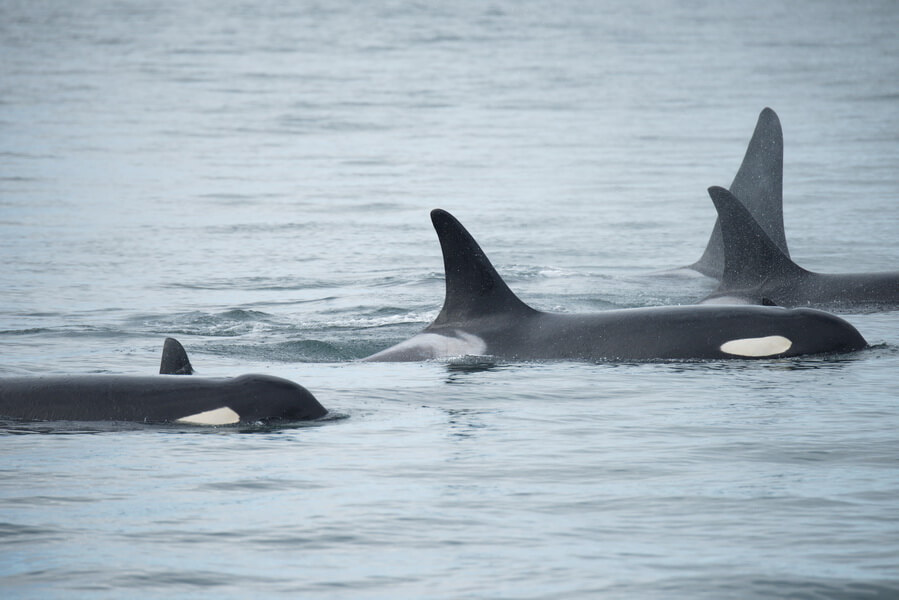Since 2013, the southern resident killer whale population has been exhibiting unusual behaviours that are worrying scientists. Strangely enough, this year, J-Pod, one of the three family groups in the population, appears to have deserted the Salish Sea off the coasts of British Columbia and Washington state. Typically observed in this inland sea every month of the year and every week of the summer, the group was not seen in this area for 108 days. So what’s going on with these endangered killer whales?
Why did J-Pod disappear from the Salish Sea?
Scientists believe J-Pod left its home area in search of waters richer in Chinook salmon. In an interview with Times Colonist, Orca Behavior Institute director Monika Wieland Shields remarked, “The fact that they’re not here is an indicator that that food is not here for them.” Historically, the Salish Sea was the primary summer habitat for J-Pod, which was seen there almost daily. Since 2013, however, the group’s sporadic absences have grown longer and longer, culminating in a record 108 days this year. Have southern resident killer whales found a new feeding ground elsewhere in the Pacific?
“Animals occupy habitats where they can fulfil their needs such as food, safety, socialization and mating,” explains Lance Barrett-Lennard, director of the Cetacean Research Program at the Vancouver Aquarium. “It may be that southern residents are spending less time in the Salish Sea because conditions are ‘better’ elsewhere, or whales have learned, over time, to hunt effectively in more remote areas.” Intelligent animals like killer whales have a tremendous capacity to adapt.
According to others, it could also be the death of the group’s matriarch in 2016 that brought about shifts in the patterns of her family. Matriarch J2, also known as “Granny”, was about 106 years old at the time of her death, and probably had some well-entrenched habits.
On July 27, J-Pod was finally seen again in the Salish Sea west of the San Juan Islands, along with members of K-Pod and L-Pod. This was the first sighting of them in this area since April. Fortunately, according to Rosie Poirier, coordinator of the Straitwatch program, the killer whales appeared to be healthy, apart from one member of K-Pod, namely K21, who showed signs of emaciation and has probably since died.
However, the killer whales’ visit was a brief one, as they have already left the Salish Sea and headed toward the open sea. “Determining whether killer whales have been ‘pushed’ or ‘lured’ out of the inland sea will require an assessment of their body condition, reproduction rate and death rate,” concludes Lance Barrett-Lennard. “It may be a few years before we really know what’s happening to the southern residents, but given that their population has been declining for several years, we can only hope that this change of habitat will lead to a recovery.”
Who are the southern residents, and what is J-Pod?
There are several killer whale ecotypes, each with its own distinctive habits. Resident killer whales are characterized by their complex social structure and their presence near coasts and inland water bodies such as the Salish Sea. They are also distinguished by their diet, feeding exclusively on salmon. In comparison, “transient” killer whales feed more on marine mammals, venture farther offshore, and have a less rigid social structure.
Southern resident society is divided into a number of family lineages, the members of which share a recent maternal ancestor. The lineages with the most genetic links to each other come together to form the matrilineal families known as J-Pod, K-Pod and L-Pod. Each group remains stable over time and has its own vocal dialect. Thanks to the annual censuses carried out on the population since 1976, we know that L-Pod is the largest group of the three, with a total of 33 individuals. Its matriarch, L25, is believed to be over 90 years old. With just 17 members, K-Pod is the smallest group, whereas J-Pod numbers 24 individuals and is the pod that appears most frequently in the Salish Sea.
Why are southern residents endangered?
Once threated by hunting and capture, this clan of killer whales now faces new challenges, the main one being a dire lack of food. Indeed, unlike other killer whale populations, which have a varied diet or may prey on marine mammals, southern residents feed almost exclusively on salmon. And a lot of salmon! Every day, the average killer whale must eat between 18 and 25 salmon to meet its energy needs. For the population as a whole, that adds up to 1,400 salmon a day, or half a million salmon a year!
Sadly, the resident killer whale’s favourite species of salmon, the Chinook, has been at risk in this part of the Pacific for over 20 years. Due to intensive fishing in the 20th century, habitat degradation and the impact of climate change on its ecosystem, its population has plummeted by 90% and is struggling to recover, despite the creation of government reserves and the implementation of quotas.
What does that mean for killer whales? Quite simply, there may not be enough salmon left in the Salish Sea for them to properly feed and live there. The living conditions in this habitat do not bode well for the population’s recovery.
Therefore, according to Rosie Poirier, in order to protect killer whales, salmon and biodiversity all at the same time, it is important to find a way to rectify the situation. The situation is starting to become urgent.


